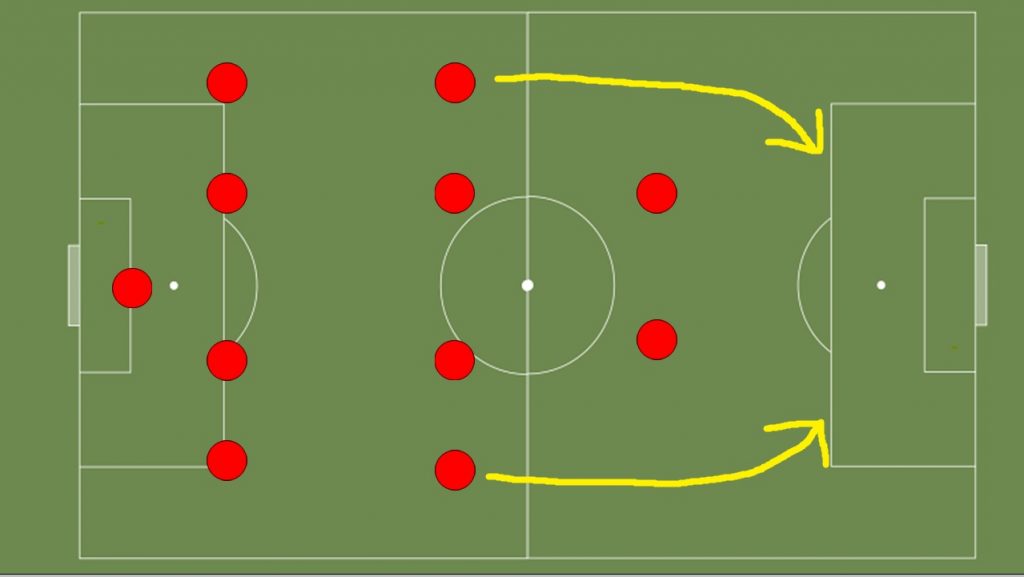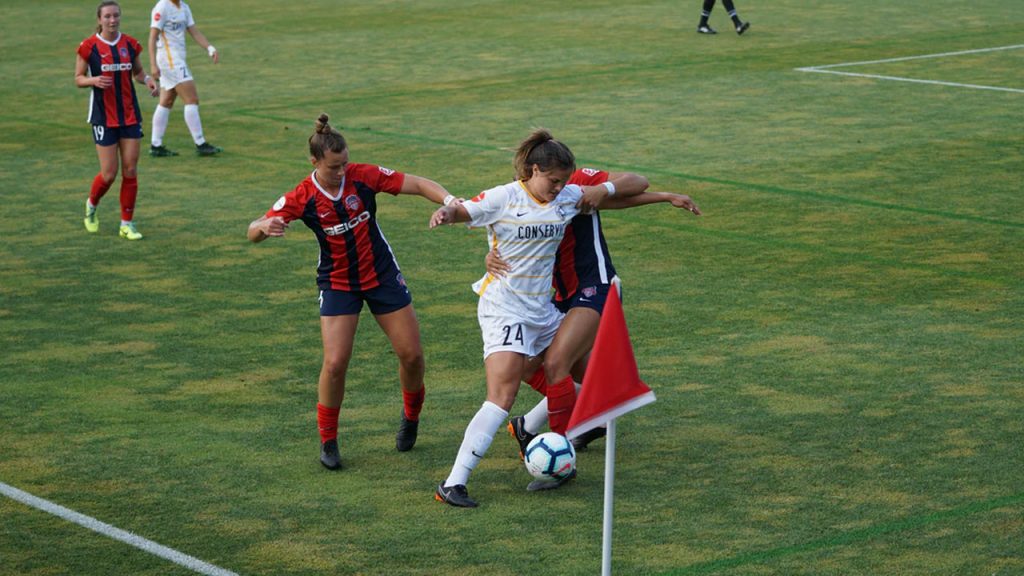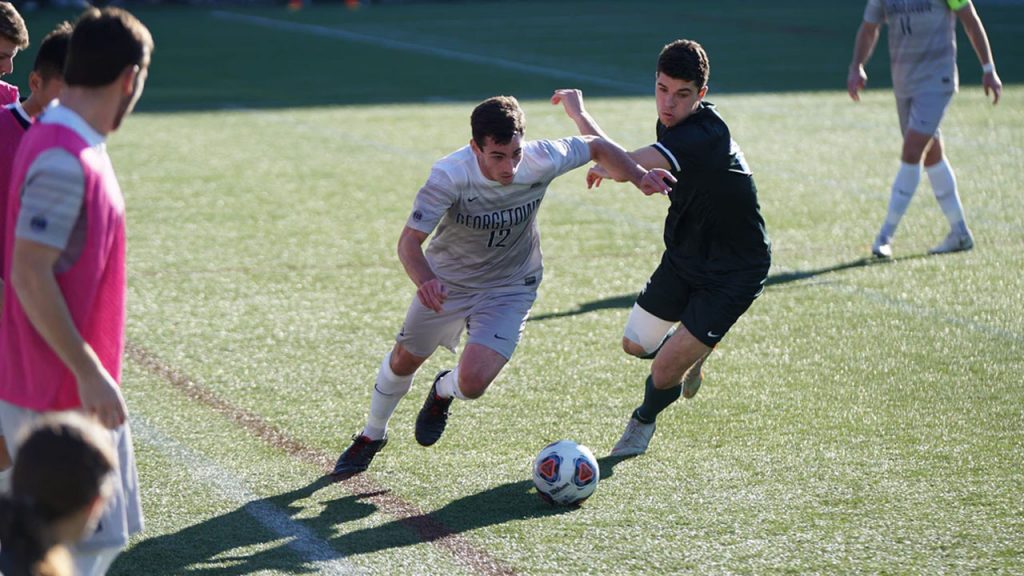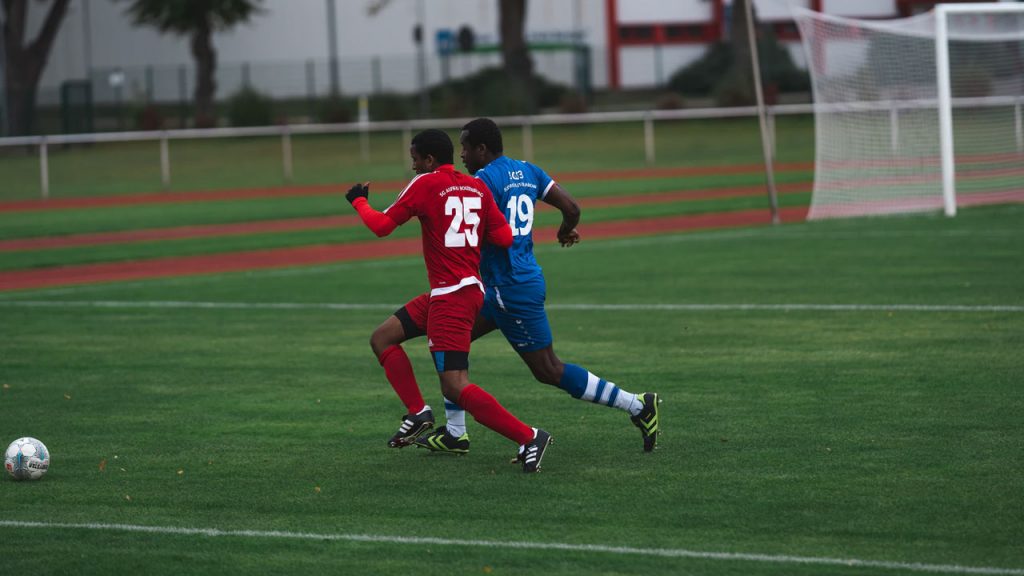Authority Soccer (authoritysoccer.com) is a participant in the Amazon Services LLC Associates Program, an affiliate advertising program designed to provide a means for sites to earn advertising fees by advertising and linking to Amazon.com. This site also participates in other affiliate programs and is compensated for referring traffic and business to them.
Soccer changed a lot since a group of British students started playing the game back in the 1800s. Formations, game styles, rules, and the list goes on.
Some positions were born with the game, and they are still there, like the striker. Others had their moment and then disappeared, like the sweeper. But there is one born with the game, then disappeared, and now is back: the winger.
Do you know what a winger is in soccer?
Wingers are forwards that attack using the sides of the field. They use their superior dribbling and crossing skills to play stuck into the sidelines to open and stretch rival defenses.
A winger dribbles their way into the pitch’s end to either crossing the ball or shooting to the goal.
Wingers became popular again after a few decades of teams playing 4-4-2 and 3-5-2 formations.
These days, soccer is about occupying spaces and intensity, and modern wingers offer a better solution to nowadays coaches to cover the sidelines in attacking positions.
What is a winger in soccer?

When soccer started, when the sport was called Association Football, every team had wingers. During those times, the game was about dribbling, having fun, and scoring.
There is a funny story that illustrates the spirit of the game in the past. Alberto Lalin was the most talented forward (a winger) of one of the best Argentinian teams at the moment, Independiente.
Lalin’s teammate, Manuel Seoane, tired of seeing Lalin losing lots of goals trying to dribble the entire defense in a tight match, said to him, “Lalo, cross the ball, and I’ll score.”
In the second half, Lalin made a superb play, cross the ball, and Seoane scored. See? Cross the ball, and I score, I told you, Seoane said. Yes, replied Lalin, but I don’t have fun.
Soccer had fewer side passes and ball possession; every team practiced a direct game style, passing the ball forward and dribbling a lot. That is why wingers were so popular.
Wingers are the players that give a whirl to the game. Fans know that when wingers get in touch with the ball, things are about to get crazy. When a winger receives the ball, they must advance and dribble their opponents.
In counter-attacks, the most electrifying soccer play, where defenders retreat as fast as they can and forwards hurry to get an advantage of the situation, wingers are responsible for turning that attack into a success.
As wingers are usually the fastest player in the team, they must either carry the ball when counter-attacking or be the most advanced passing option.
What makes a good winger?

A good winger must, above all, be fast and have fantastic dribbling skills. They must also have excellent acceleration and pace.
Their speed and dribbling skills will put them near the opposition’s goal. From that moment, there is a set of skills that will separate good wingers from regular ones.
- Crossing. Their crossing ability must be on point; a good crossing is a pass to a teammate, not merely throwing the ball inside the box.
- Acceleration and Pace. Wingers must have what in soccer is called, change of rhythm. This is going from zero to sprinting in no time, vital to let defenders stranded.
- Decision. When the winger managed to dribble their opponents, they have a few seconds to decide the best option for finishing the play the best way.
- Teamwork. Wingers must pick the best way of finishing a play in fractions of seconds. Their shooting to goal option is generally from a tight angle, while strikers are in front of the goal. A winger with a developed teamwork spirit will cross to a teammate instead of trying a tough shot.
What is the job of a winger in soccer?

A winger’s job is to attack from wide positions, to offer their teams the option of using the field’s width, to lead counter-attacks, and, in modern soccer, to press in high zones.
Wingers are handy in teams that put their money on ball possession and those who approach the game with a direct play style. Squads who practice a direct style are tagged as defensive nowadays, but that is a discussion for another day.
Teams who practice a ball possession game depend on their wingers to cut defenses diagonally, from outside to inside, to surprise their rivals from behind them, in a move called blindside runs.
In these teams, wingers stay on wide positions, forcing defenses to stretch and opening a bit. Wingers partner a lot with fullbacks on the sides to outnumber defenders on the sidelines.
For teams that prefer a direct game style, teams that wait in their field and concentrate their efforts on counter-attacks, wingers are their main asset.
Winger in these teams are the outer part of the defensive block in the midfield, and when their team regains possession of the ball, they launch themselves to attack the space.
It is also the winger’s job to start the pressing over the rival defenders. We see many teams restarting the game with a short pass from the keeper to the defenders; wingers must press that movement and force rivals to get rid of the ball quickly.
How do you play a winger in soccer?

To play a winger position in soccer, you must always be ready to lead counter-attacks, cut diagonally inside a rival’s defensive system, and be one of the first in pressing the opposing team.
Wingers must keep wide on the field almost all the time, but they can also close into the box, joining the team’s striker. Both wingers can move to play inside the box, or just one.
To make it easier for teammates to pass the ball to wingers, they must create space between them and the defenders to receive the ball comfortably and without risking losing possession.
There are two ways a winger can receive the ball.
- At the feet. The winger backs off to their field, beyond the midfielders’ line, and receives the ball directly from the defenders to initiate the attack.
- At fullback’s back. If the fullback follows the winger, not letting them receive the ball comfortably, the forward must take advantage of the space created between the fullback and the end of the field.
Playing winger in soccer is about challenging the fullback and testing them both mentally and physically. The fullback must be worried all the time about the winger’s position on the field.
In modern soccer, the winger also has essential defensive duties. Nowadays, it is said that forwards are the first defensive line of each team, and the winger is not excluded from this responsibility.
Some coaches even ask their wingers to pursue rival’s fullbacks all the way when defenders move to offensive positions. This game approach is harshly criticized; if the winger chases the defender, they won’t have gas to attack afterward.
Wingers get many chances of scoring. Training long hours of finishing might be a good idea since a winger that can score is a massive advantage to any team.
How important is a winger?
From the 80s until the early 2000s, teams would prefer to attack with two strikers and use midfielders to attack from the sidelines.
Back then, the winger was an exception in some teams; their importance was really low.
During the 2006 World Cup, the 4-2-3-1 tactic regained popularity. In this tactic, three players play behind the striker, one through the middle and two on the sides. These two players on the sides started acting very similar to the original wingers.
After that, the teams that dominated the world soccer scene used either 4-2-3-1 or 4-3-3 tactic, this last one with two defined wingers.
Wingers became vital to their team’s performance, and they still are. The winger’s functions have a massive importance in the defensive and offensive spectrum of their teams.
Is a winger a forward or midfielder?

Wingers are forwards. The confusion about whether they are forwards or midfielders surges due to the game’s new physical approach.
In teams where the winger has as many defensive tasks as offensive, making them more worried about marking their rival’s fullback than being ready to counter-attack, they look more like a midfielder than a forward.
There are many examples of wingers with tremendous attacking skills wasting their energy on pursuing rivals and then poorly attacking because they have no gas in the tank.
Wingers can help their teams by doing some midfielders tasks, but using a winger as a midfielder can be a mistake.
When a team spends lots of time in their field, wingers can stay “parked” in the midfield, helping their team recover the ball, but they must be ready to explode and lead the counter-attack as their team gets the ball.
In equilibrated games, where both teams have a similar quality and exchange attacks, asking the wingers to pursue rivals and play as midfielders to recover the ball is misusing them.
The wingers must help pressing rival defenders in their field, but they should not run all the way back to the defensive block.
